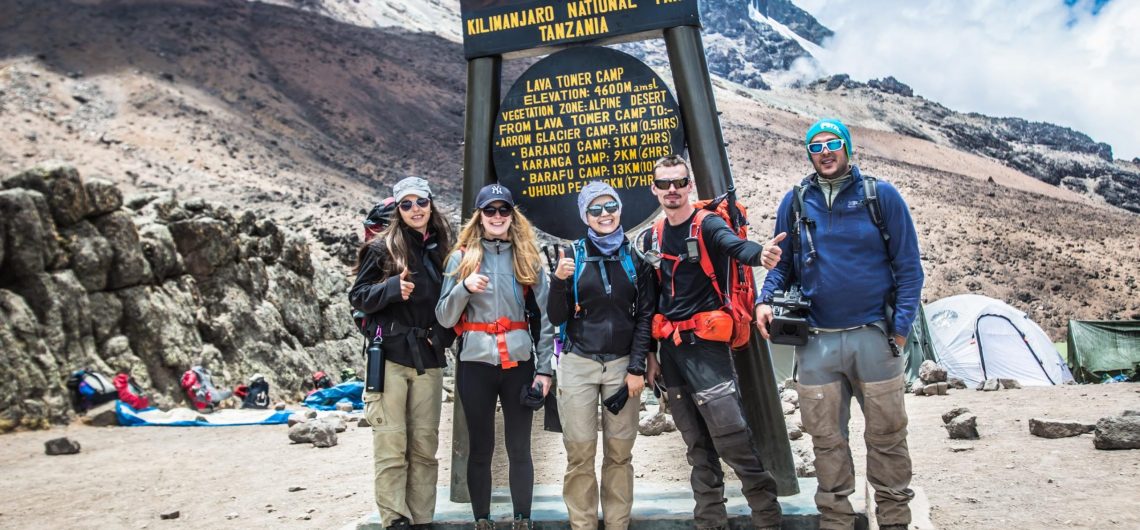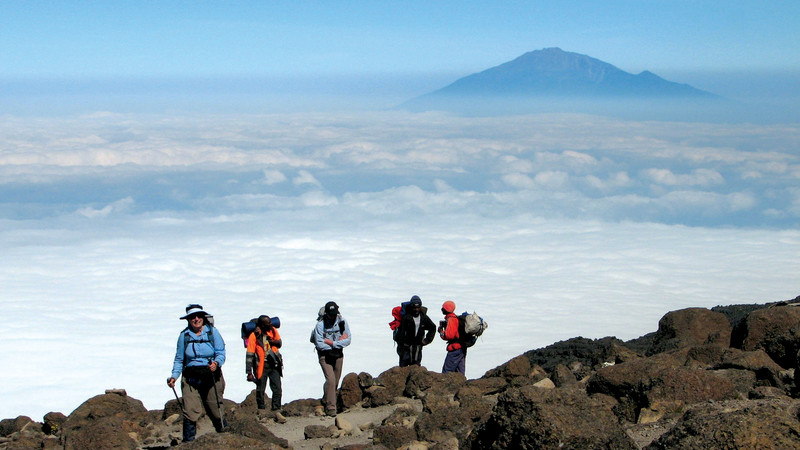The price of climbing Kilimanjaro may cost anything from $1,000 to $4,000 USD, going by the current exchange rate of a climber from the (England in the United Kingdom U.K would be £755 to £3020 ( Sterling Pounds ). Flights, clothing, and equipment are not included. Depending on where you live and how much gear you currently have, you’ll probably need at least another US$1,000 for those things.
The cost of the climb is determined by a variety of factors, including the tour operator, group size, trip duration, and itinerary.
Given that the park fees are the most expensive part of climbing Kilimanjaro, no tour company can really undercut another. They can pay their employees below minimum wage, provide low-quality food, and take the quickest and least beautiful way up the mountain, as many local businesses do. This is why local providers are sometimes far less expensive than international carriers.
All-mountain rules are followed by KPAP-registered operators, including fair treatment of porters and guides! Exploitation on Kilimanjaro is a serious concern, and hiring low-cost local operators exacerbates the situation.
The route is the second cost factor to consider. Once again, the cheapest local operators will transport you up the Marangu path, which is the shortest and least picturesque. Because 5 days is not enough time for your body to acclimate, this route has by far the lowest summit success rate. Paying a little more and hiking one of the 7 or 8-day routes would be far more prudent.
Price Points for Operators
Marangu route – US$1,000 – 1,500 for basic local operator fee
The cost of a lengthier trip, such as Machame or Lemosho, is between US$1,600 and 2,000.
Machame or Lemosho costs between $2,000 and $3,000 with a Western operator.
US$4,000 more for a high-end operator
However, equipment, which costs on average $500, may be hired for a low price.
Flights cost an average of US$800.
The cost is determined on the route and service quality. Others have commented that if you want A+ service, the price might change. However, the lower end of the spectrum might cost around $850, which is fairly reasonable. However, I would recommend spending a little extra, around $1000, to be cautious.
Cost of Porters and Comfort
It depends on how important your comfort is to you, as well as how important your porters are to you. Low-cost outfitters do not provide enough care for their porters.
Learn more about how much you should tip the Kilimanjaro Porters
There’s no way you can spend $1000 for a strong climb team to go up the mountain when they have to pay park fees of around $700 for the typical ascent!
You may wish to budget some money for the nights before and after the trip, leaving aside the ticket (which is $1500 from the US). I’d estimate you’re looking at roughly $3000 to $3500 for park fees, hotel fees, porters, and gear, not counting flights, and assuming an excellent guide, reasonable speed, and nice route (like Lemosho). Add $300 (or more) to the total for tips at the end.
 Calculation and logistics for the trip
Calculation and logistics for the trip
It is dependent on several factors:
a) the number of people in the group,
b) the tour operator (local vs. western),
and c) the season.
For example a group of 9 people and 34 support personnel for around $4K using a local operator. Here’s how we break it down:
$1000 for gears (When you buy everything from scratch – not rent anything)
$1.3K for a flight
$1.5K for the tour (Dec is considered a rainy season so the price is cheaper)
$300 in tips
Hotel: $0 (Hotel was is in the tour ticket for the first and last nights.) For the remaining nights, you will in town, paying $100 each night.)
Note: Because mountain weather is unpredictable, you can save money on the excursion if you are ready to take a chance of climbing Kilimanjaro in the off-peak season.
![]()


 Calculation and logistics for the trip
Calculation and logistics for the trip
Comments